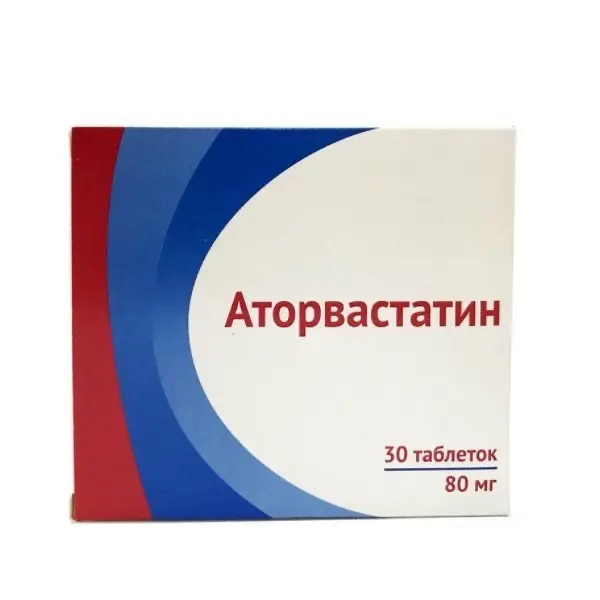Description
Diacarb Pharmacodynamics
Acetazolamide is a systemic carboanhydrase inhibitor with weak diuretic activity. Carboanhydrase (CA) is an enzyme involved in the process of carbon dioxide hydration and carbonic acid dehydration. Inhibition of carboanhydrase reduces the formation of bicarbonate ions with a subsequent decrease in sodium transport inside the cells. The effects of Diacarb® are due to the point of application of the molecule: vascular plexuses of the brain, proximal nephron, ciliary body of the eye, erythrocytes. Acetazolamide is used to treat liquorodynamic disorders and
intracranial hypertension by reducing excessive cerebrospinal fluid production at the level of vascular plexuses
brain plexuses. Inhibition of carboanhydrase in the ependymocytes of the vascular plexus decreases the excess negative charge in
ependyma cells and reduces gradient plasma filtration into the brain ventricular cavity. Acetazolamide is used in the therapy of
edema syndrome due to its weak diuretic effect. As a result of inhibition of carboanhydrase activity in
proximal part of nephron there is reduction of carbonic acid formation and decrease of bicarbonate and Na+ reabsorption by tubule epithelium, due to which water excretion significantly increases. Acetazolamide increases the excretion of
bicarbonates, which can lead to metabolic acidosis. Acetazolamide causes renal excretion of phosphate, magnesium, calcium, which may also lead to metabolic disorders. During the next three days of therapy Na+ reabsorption in the distal nephron is compensatorily activated, reducing the diuretic effect of Diacarb®.
After 3 days from the start of use, acetazolamide loses its diuretic properties. After a break in treatment for several days, newly prescribed acetazolamide resumes diuretic effect due to restoration of normal proximal nephron carboanhydrase activity. Acetazolamide is used to treat glaucoma. During the formation of aqueous humor of the eye, bicarbonate ions are actively transported to the posterior chamber from the cytoplasm of nonpigmented cells to compensate for the gradient of positive ions due to active transport of Na+ ions. CA inhibitors block the formation of carbonic acid, thereby reducing HC(U~ production. In the absence of sufficient amounts of HCO3 ions, the positive ion gradient increases, which causes a decrease in aqueous humor secretion. Inhibition of carboanhydrase of the ciliary body reduces the secretion of aqueous humor of the anterior chamber of the eye, which reduces intraocular pressure. Tolerance to this effect does not develop. Ophthalmotonus decreases after 40-60 minutes when taking acetazolamide, the maximum effect is seen after 3-5 hours, the intraocular pressure stays below the initial level for 6-12 hours. On average, intraocular pressure decreases by 40-60% of the initial level.
The drug is used as an adjuvant in the treatment of epilepsy, because inhibition of carboenhydrase in the nerve cells of the brain inhibits pathological excitability.
Indications
– Edematous syndrome (mild to moderate, in combination with alkalosis);
– Cure of an acute attack of glaucoma, preoperative preparation of patients, persistent cases of glaucoma (in complex therapy);
– In epilepsy as an additional therapy to antiepileptic drugs;
– Acute altitude sickness (the drug reduces the acclimatization time);
– Lykovodynamicheskie violations, intracranial hypertension (benign intracranial hypertension, intracranial hypertension after ventricular bypass) in the treatment.
Contraindications
– Hypersensitivity to acetazolamide (or other sulfonamides) or any other component of the drug; acute renal insufficiency;
– uremia;
– hepatic insufficiency (risk of encephalopathy); refractory hypokalemia and hyponatremia;
– metabolic acidosis;
– hypocorticism;
– Addison’s disease;
– decompensated diabetes mellitus;
– Pregnancy (first trimester);
– lactation period;
– Children under 3 years of age (solid dosage form).
With caution:
Edema of hepatic and renal genesis, concomitant use with acetylsalicylic acid (doses over 300 mg/day), pulmonary embolism and pulmonary emphysema (risk of acidosis), pregnancy (II and III trimester), advanced age, water-electrolyte balance disorders, liver function disorders, in patients with risk of urinary obstruction.
Administration during pregnancy and breast-feeding.
Diacarb® is contraindicated during pregnancy in I trimester and is used with caution in II and III trimesters
only in cases when the potential benefit to a mother exceeds the potential risk to a fetus. A small amount of acetazolamide is excreted with breast milk, therefore, if it is necessary to use Diacarb® , breast-feeding should be stopped.
Directions for use and dosages
- The drug is taken orally, strictly as prescribed by the physician.
- If the drug is missed, do not increase the dose when taking the next dose.
– Edematous syndrome
At the beginning of treatment, 250 mg in the morning. - To achieve the maximum diuretic effect, it is necessary
Take Diacarb® once a day every other day or 2 days in a row with a one-day break. - Increasing the dose does not increase
diuretic effect. If the response to acetazolamide therapy decreases, the drug should be discontinued
for 24 hours (to restore renal carboanhydrase activity). The use of acetazolamide does not cancel the need
use of other drugs, bed rest (if recommended by the doctor) and restriction of
sodium chloride intake.
– Glaucoma
Diacarb® should be taken as part of complex therapy. - In adults with open angle glaucoma, the drug is prescribed in a dose of 250 mg 1-4 times daily. Doses greater than 1000 mg do not increase the therapeutic effect. In secondary glaucoma, the drug is prescribed in a dose of 250 mg every 4 hours during the day. In some patients, the therapeutic effect appears after a short-term administration of the drug in a dose of 250 mg 2 times a day.
- In acute glaucoma attacks: 250 mg 4 times a day.
- Children over 3 years of age in glaucoma attacks: 10-15 mg/kg body weight per day in 3-4 doses.
- After 5 days of intake a break is taken for 2 days. During long-term treatment it is necessary to prescribe potassium preparations, potassium-saving diet.
- In preparation for surgery, 250-500 mg is prescribed in the morning before and on the day of surgery.
– Epilepsy - Doses for adults:
250-500 mg/day in a single dose for 3 days, with a break on the 4th day. - In concomitant use of acetazolamide with other anticonvulsants, 250 mg once daily is used at the beginning of treatment, gradually increasing the dose if necessary. The maximum daily dose for adults is 1000 mg.
- Doses for children over 3 years of age:
8-30 mg/kg per day, divided into 1-4 doses. The maximum daily dose is 750 mg.
– Acute altitude sickness. - The use of the drug in a dose of 500-1000 mg per day is recommended.
In case of rapid ascent – 1000 mg per day. - The drug should be used 24-48 hours before ascent. In case of occurrence of disease symptoms the treatment is continued for the next 48 hours or longer, if necessary.
– Livorodynamic disorders, intracranial hypertension
It is recommended to use the drug in a dose of 250 mg per day or 125-250 mg every 8-12 hours. The maximum therapeutic effect is achieved with a dose of 750 mg per day. - Daily dosing without intervals may be required to achieve optimal therapeutic effect.





